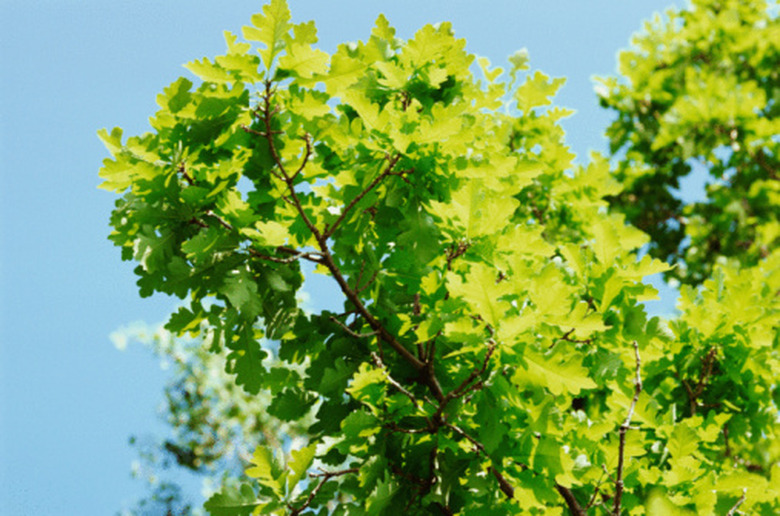How To Prune A Water Oak Tree
Water oak (Quercus nigra) can grow and reproduce quickly in a variety of locations. Whether it's a sandy spot or a swamp-like environment, this tree doesn't have much trouble growing. Compared to other oak trees, however, the water oak lives a shorter life — usually 60 to 80 years.
Water oak (Quercus nigra) can grow and reproduce quickly in a variety of locations. Whether it's a sandy spot or a swamp-like environment, this tree doesn't have much trouble growing. Compared to other oak trees, however, the water oak lives a shorter life — usually 60 to 80 years. The tall, slender tree can reach 80 feet tall at maturity. It is best grown in USDA hardiness zones 6 through 9. Prune water oak trees to improve their shape and keep them healthy.
Step 1
Prune away weak branches from an early age. Developing a strong branch structure right away will make the tree healthier. It's better to remove wayward and weak branches when they are small than to prune away large limbs. Cutting off large branches can cause the tree to decay at the wound sites. Target branches that are connected to limbs with a weak, V-shaped angle between the branch and the trunk. Keep branches with a wider angle; these will be less likely to break.
- Water oak (Quercus nigra) can grow and reproduce quickly in a variety of locations.
- Cutting off large branches can cause the tree to decay at the wound sites.
Step 2
Cut off diseased, dead or damaged branches. Water oaks are often attacked by boring insects, canker diseases, scales and galls. Prune the branches where they meet healthy wood.
Step 3
Remove unproductive branches. If they have fewer leaves, compared to other branches in the tree, cut them off.
Prune A Live Oak Tree
Wait until after the first frost of the fall season to prune your oak tree, which reduces the chance of an insect infestation on the cut branches. Set up a ladder to access the branches. Examine the tree for dead branches. Using pruning shears or a tree-pruning saw, cut these branches parallel to the main branch. Prune sparingly based on aesthetic concerns that affect the shape of the tree.
- Cut off diseased, dead or damaged branches.
- Prune the branches where they meet healthy wood.
Tip
Make clean cuts. Ragged cuts will damage the tree. Keep pruning equipment sharp.
